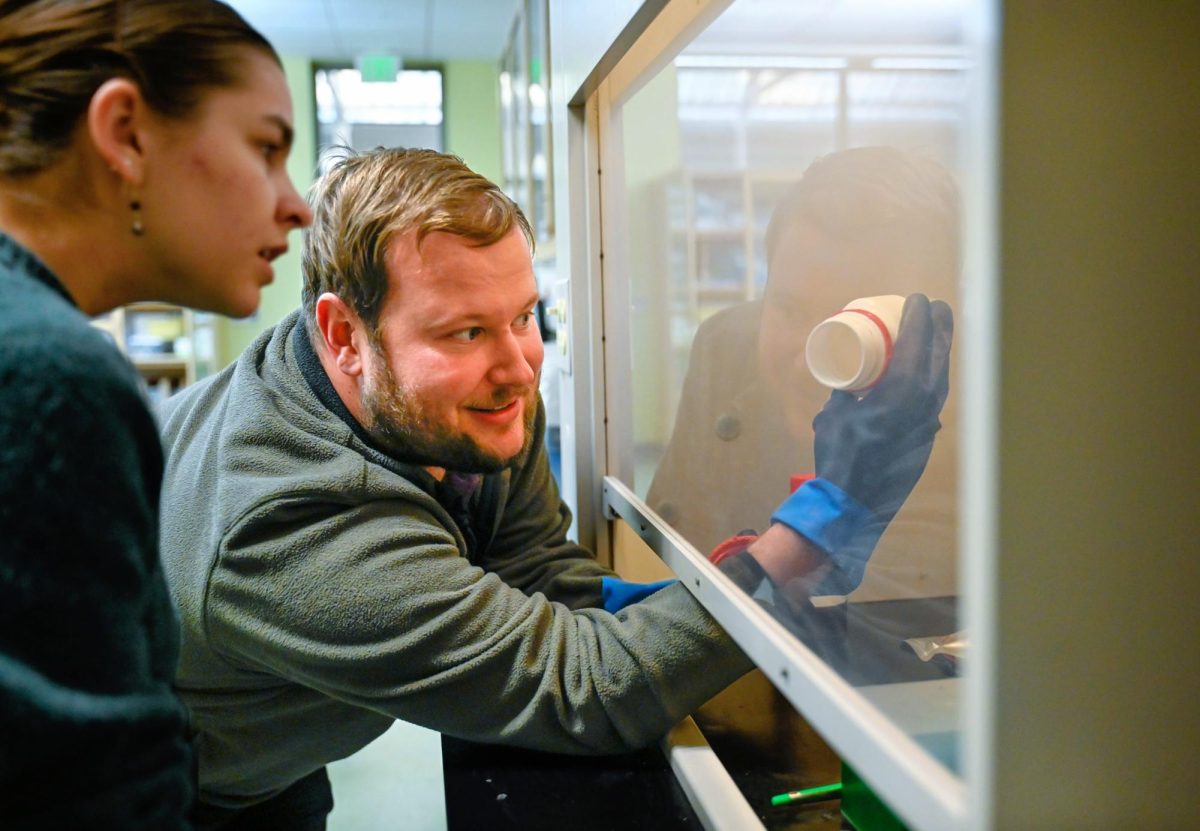Categories:
Driving self-directed science
Open lab powers student innovation through independent research projects
January 24, 2025
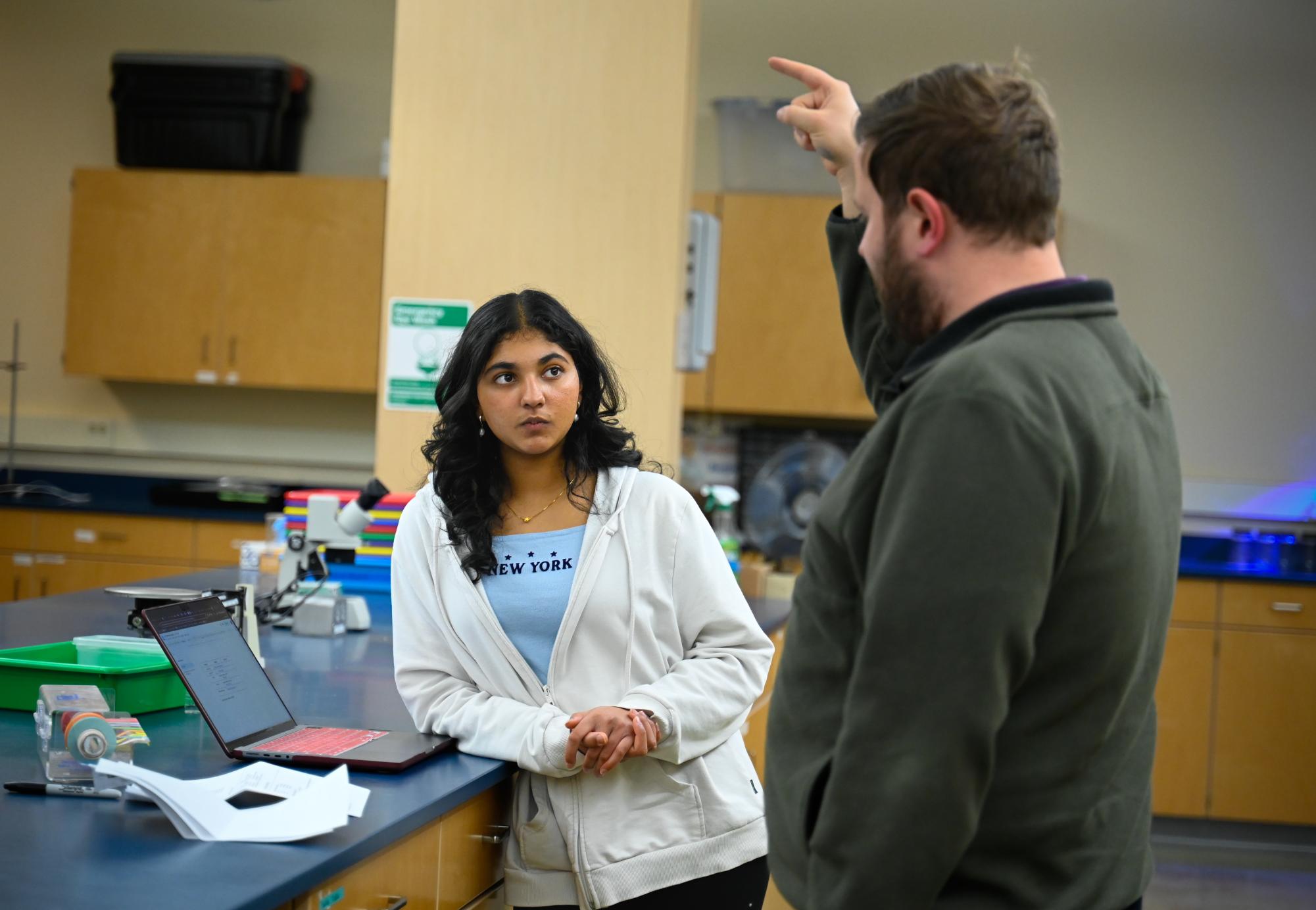
Sophomore Tanisha Vaish converses with open lab facilitator Zane Moore. Dr. Moore offers suggestions and helps students in the open lab with their research projects.
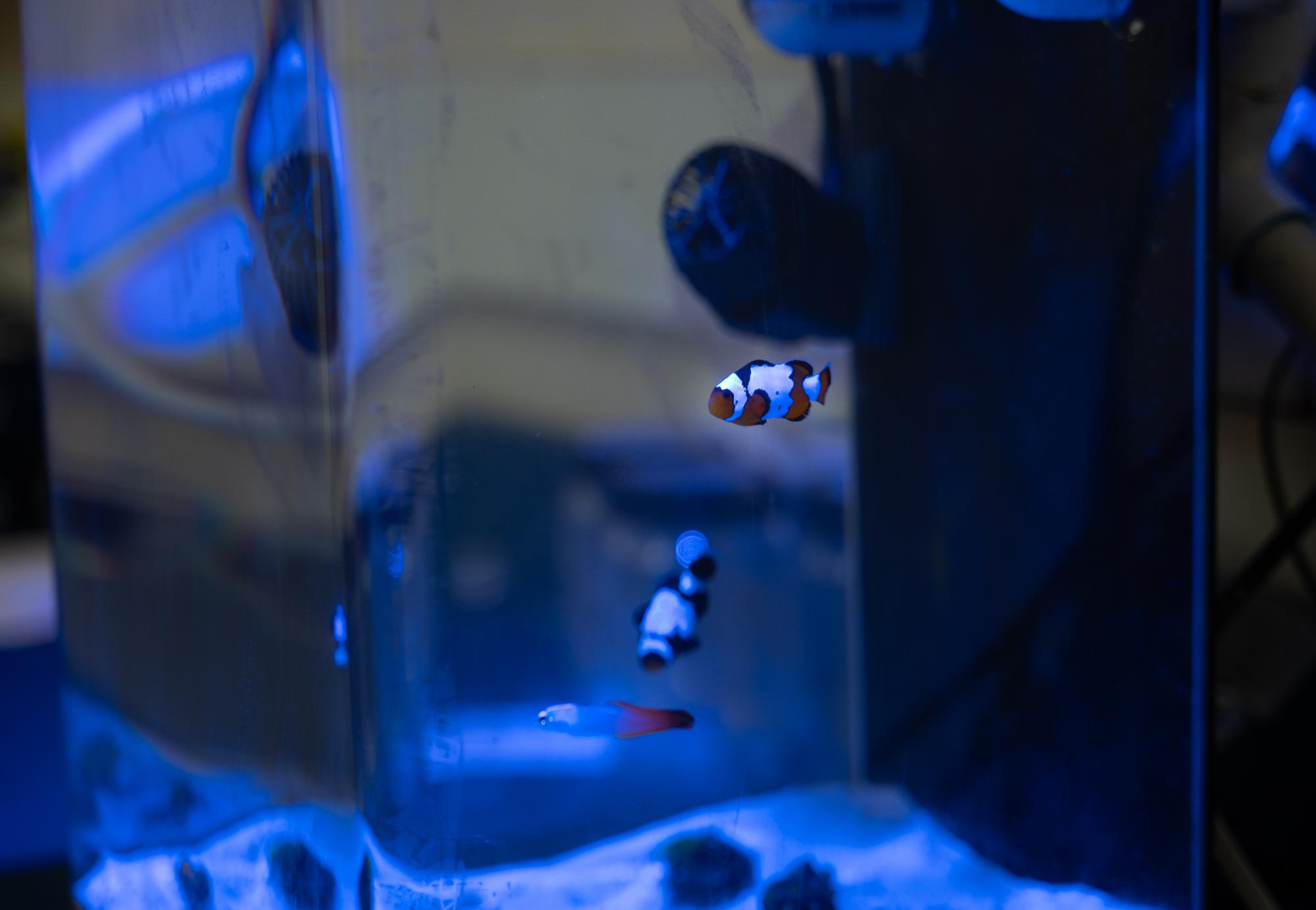
During a typical school day, physics and science research teacher Chris Spenner’s classroom is a hub of quiet concentration, home to the Research Methods and Advanced Research classes. But when the bell rings to signal the end of school, the classroom transforms into an open lab—a space that buzzes with scientific innovation and activity.
Under the guidance of open lab facilitator Zane Moore, students dive into self-directed research projects and experiments, equipped with tools like microscopes, hot plates and a DNA sequencer. The open lab fosters collaboration among students studying different areas of STEM, allowing them to share ideas and learn about each others’ disciplines.
Fish swim in a coral-filled fish tank in the open lab. Senior Oskar Baumgarte’s project studies the RNA transcriptome in different colored coral. (Ashley Mo)
Open lab facilitator Dr. Zane Moore shows junior Emily Bryan a chemical inside the fume hood. Fume hoods are laboratory safety devices that ventilate hazardous fumes or particles. (Ashley Mo)
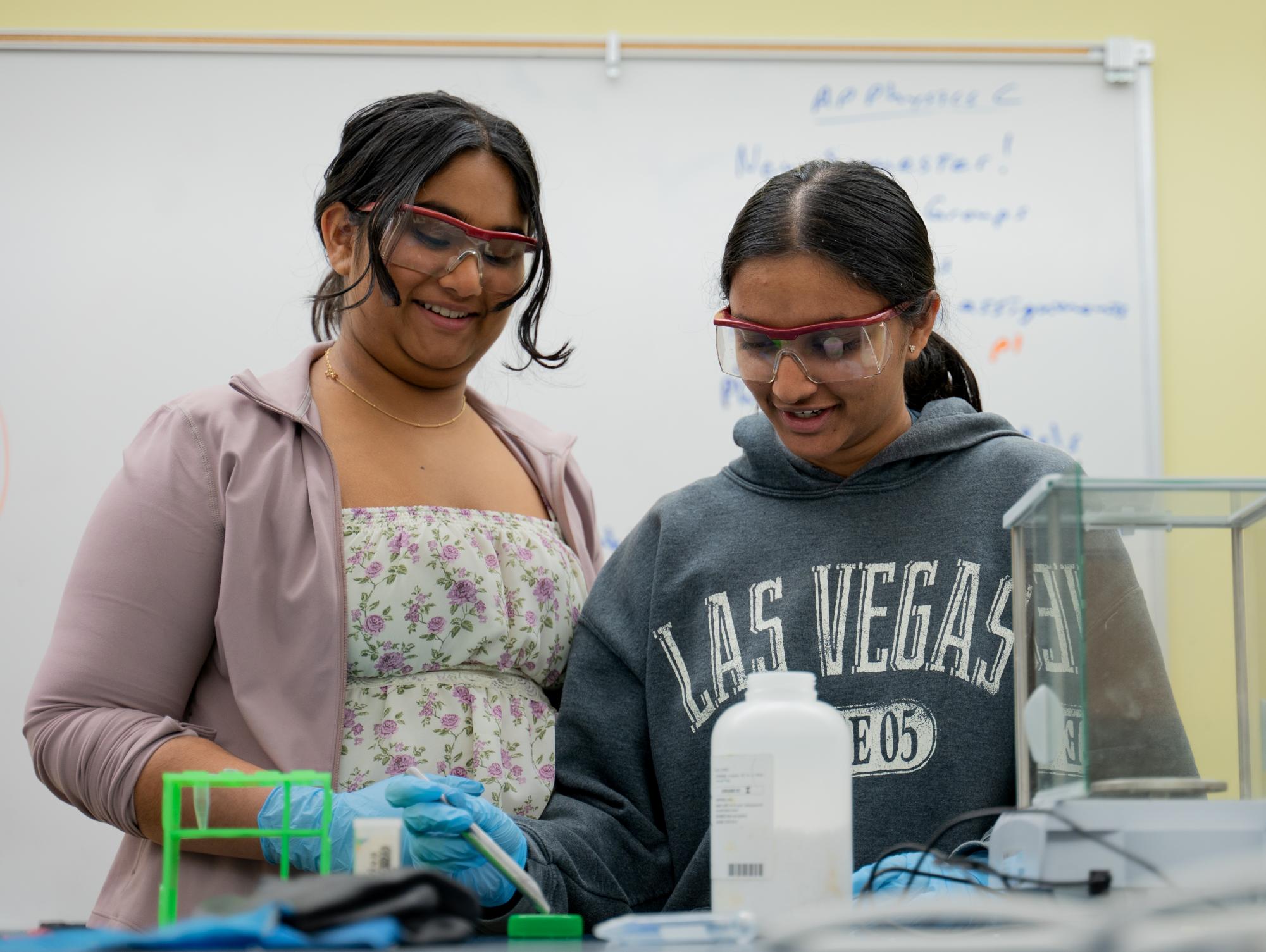
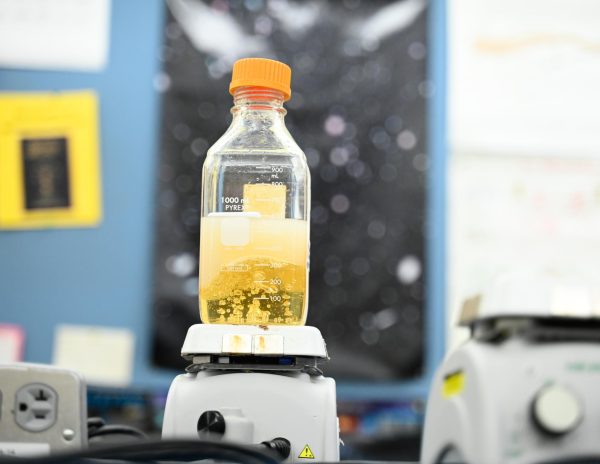
Sophomores Laya Sunkara and Arshia Sankar measure out a chemical using a scoopula. The broad goal of their research project is to investigate DNA repair mechanisms through a particular gene. (Ashley Mo)

Micropipettes lie in the open lab ready for student use. These tools allow students to accurately measure and transfer small volumes of liquids that require precision. (Ashley Mo)



